Art Collaboration: The Witch's Bounty
Some insight behind my art process for the first "splash art" for a storytelling collaboration with a fellow Substack creator. Part One of Three: Nathander's Hunt Begins
Context
Here’s something a little different from my usual posts; I recently began a collaboration with
(aka ‘The (Side) Quest’), creating a three part story about a man named Nathander who ventures out into the forest near his hometown to capture and expose a suspected witch. My part in the collaboration is the production of cover art for each of the sections, in line with the characters and events. This post will give a little insight behind the process of the first part. is a writer and storyteller, aspiring to become an RPG designer. His writing is efficient, striking a great balance between fleshing out the world, without losing sight of the characters’ experiences. It has been great collaborating so far!Process
The following will outline some of the process. I didn’t capture every single stage because I wanted to maintain a flow state.
Designing the character
The first step was to develop a character concept in line with the description of the main character provided in the outline. This ensured that my vision and that of
were mutually realised, and as a reference for the full artwork.Composition Thumbnails
Whenever I am creating a complicated piece, I make time to produce a series of very rough sketches and lighting scenarios. This stage allows me to test ideas quickly, without having to exhaust time on those with little potential.
For this part of the story, Nathander is pursuing a man named Hadwin, whilst taking precautions to remain unseen. I therefore leaned into a lighting setup which placed Nathander in the shadows and at a distance, with a pair of exceptions for the sake of experimentation.
Composition Sketch
Once I have selected the best thumbnail, considering both the preference of the collaborator and which composition compliments the story best, I begin to sketch a more complicated rendition. In this case, the sketch remained quite rough, since I was trying to be time efficient.
This stage is important for making sure the composition elevates the storytelling and draws the eye to intentional focal points. I had Nathander turn his head to look and placed his target approximately within the golden third (a way to divide up the canvas and draw attention to specific elements), in order to immerse the audience in the hunt.
Greyscale Block-in
Greyscale is a process of blocking in the lights and shadows without any colour. This allows me to focus my attention entirely on the composition, simplifying the process. I add some minor rendering to create a focal point on the face, but try to avoid spending too much time on details.
Ambient Lighting Overlay
In order to ensure that the colours are coherent, I layer in a blue overlay. This helps me to ensure that everything feels like it is in the same environment. Any time I add new colours, such as for clothing or skin, I try not to deviate too far from the cold, blue tone. This part isn’t an exact science by any means.
Full Artwork
The last stage is to continually refine the existing elements during a process called rendering, until the final result is realised. It also involves making decisions about how detailed certain sections are. I purposefully refrain from adding details into the background elements and increase the detail on the character in order to emphasise the focal point even more than before.
This piece was really about showing Nathander’s competency in hunting; close enough to keep track of his target, but not so close as to be easily spotted or heard. You can read the full part one here and be sure to check out


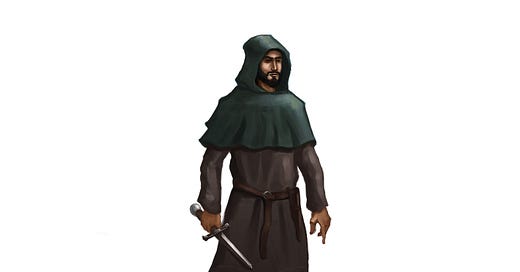


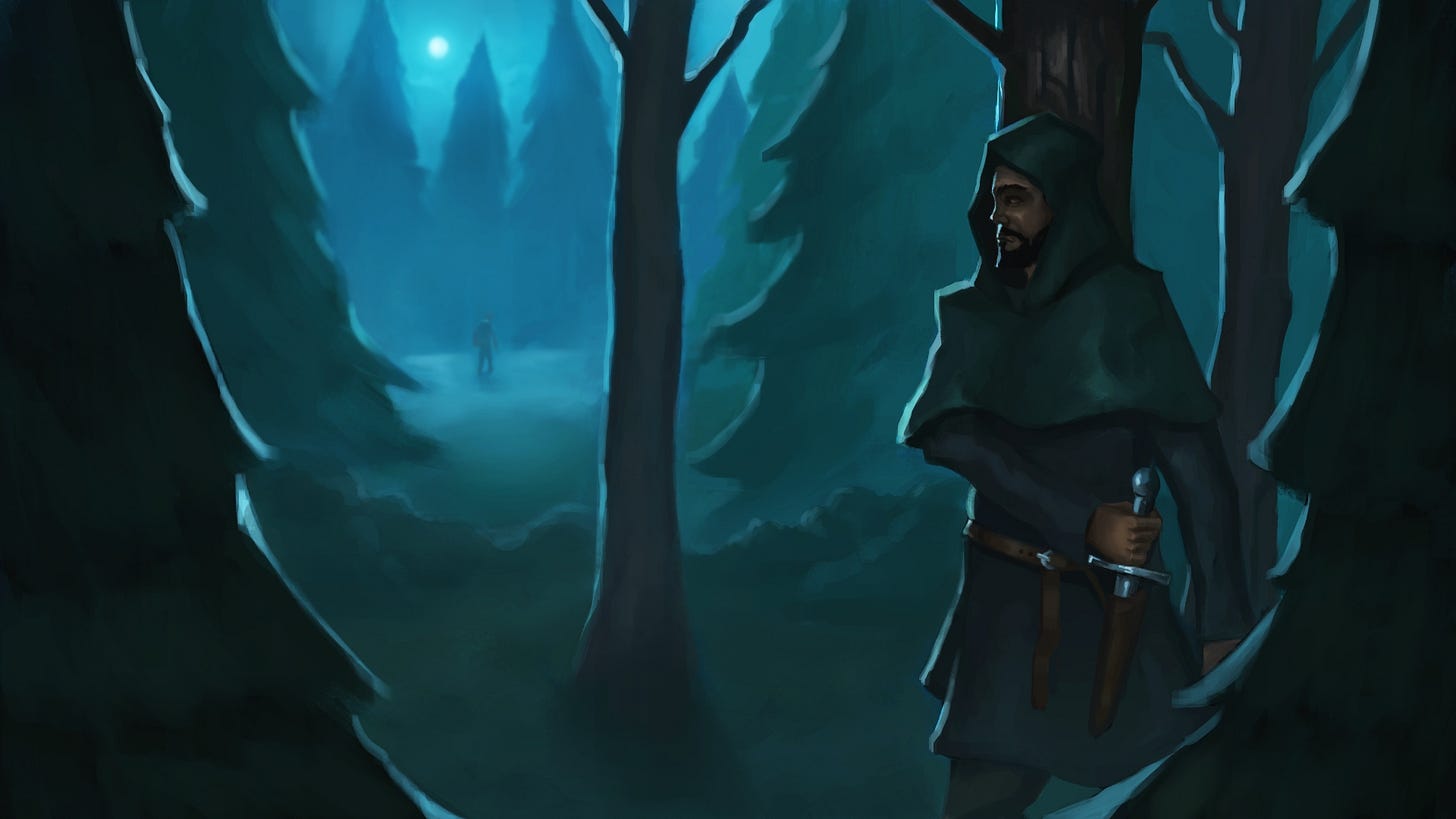

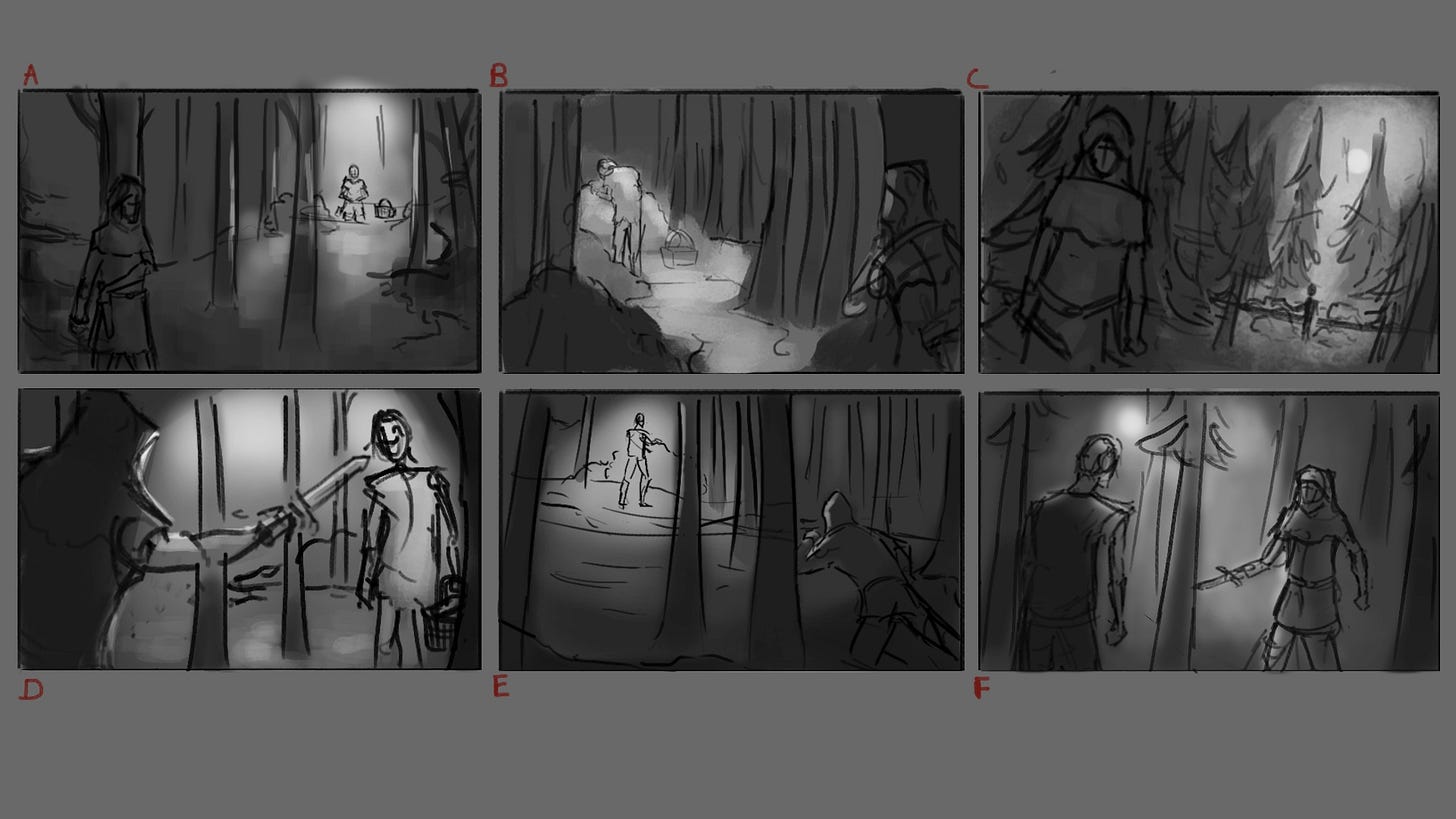
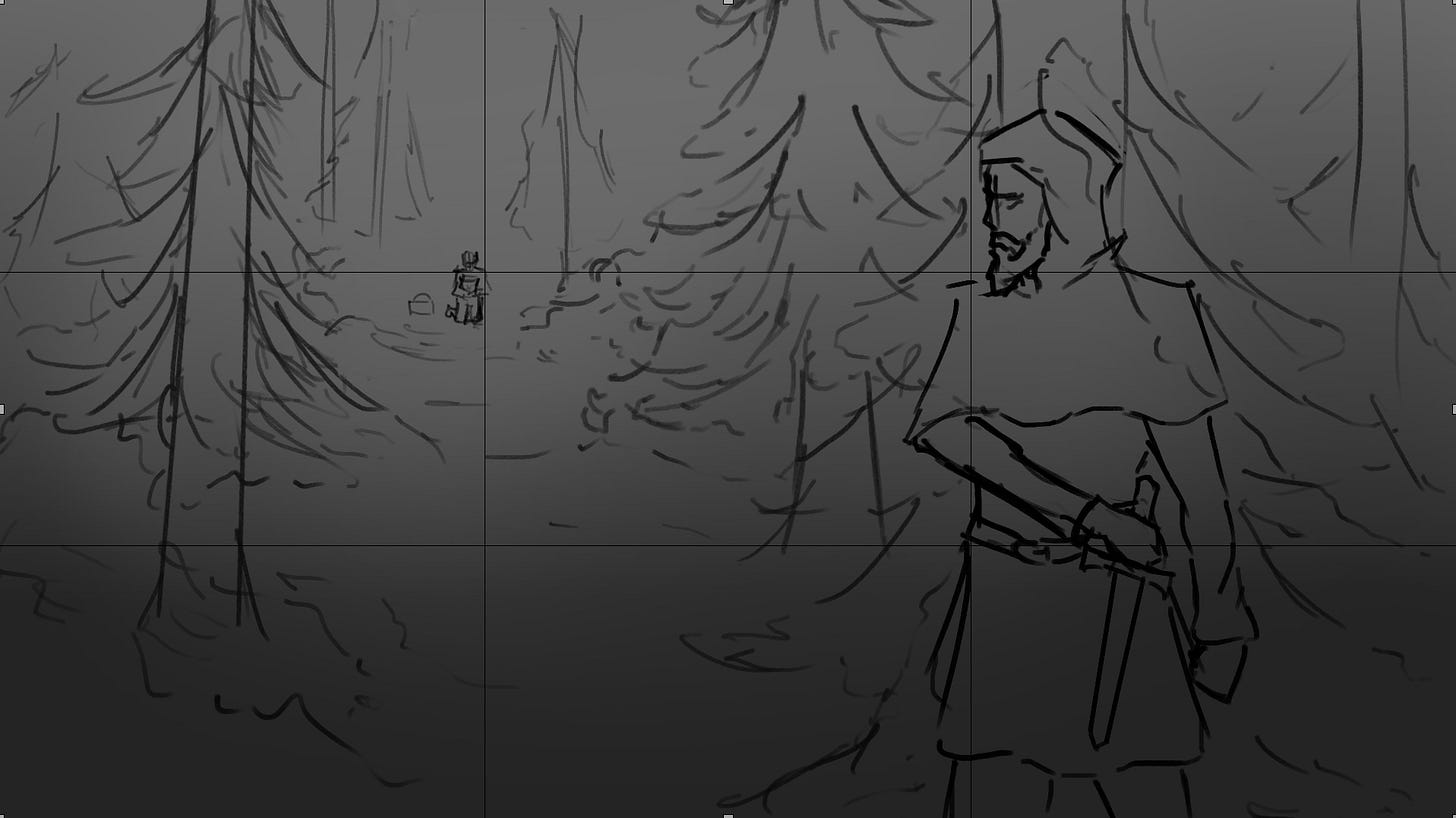
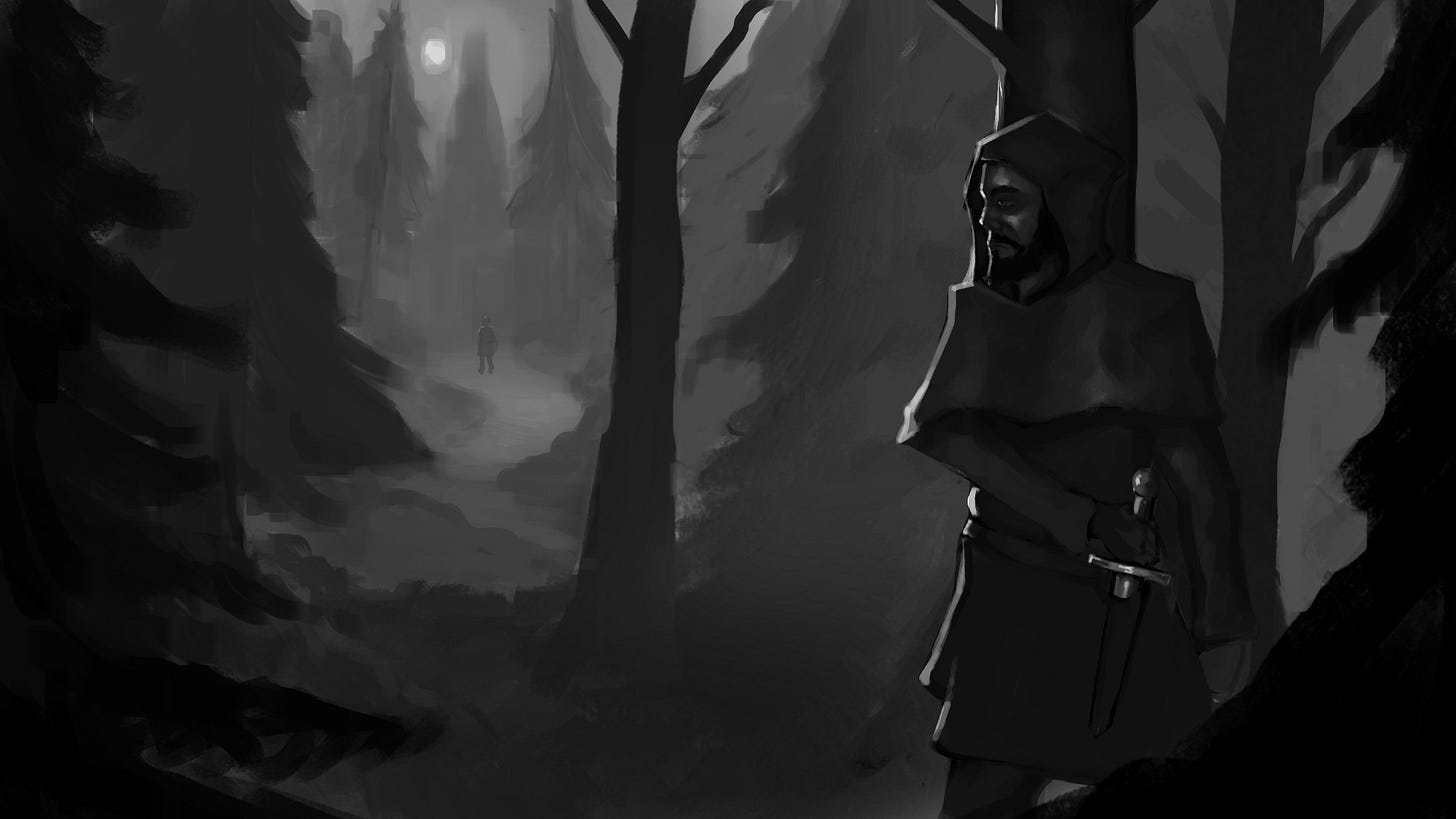
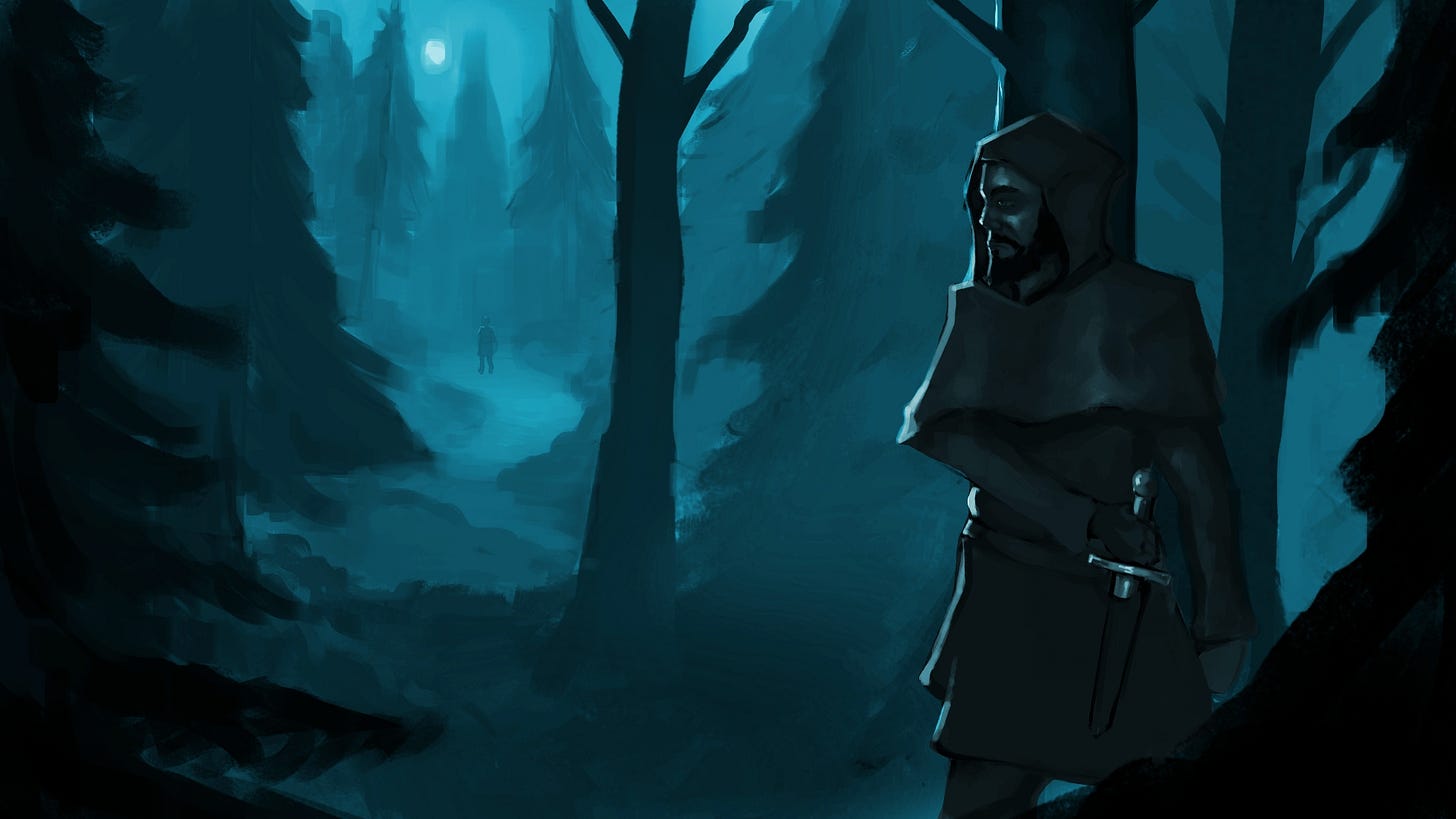
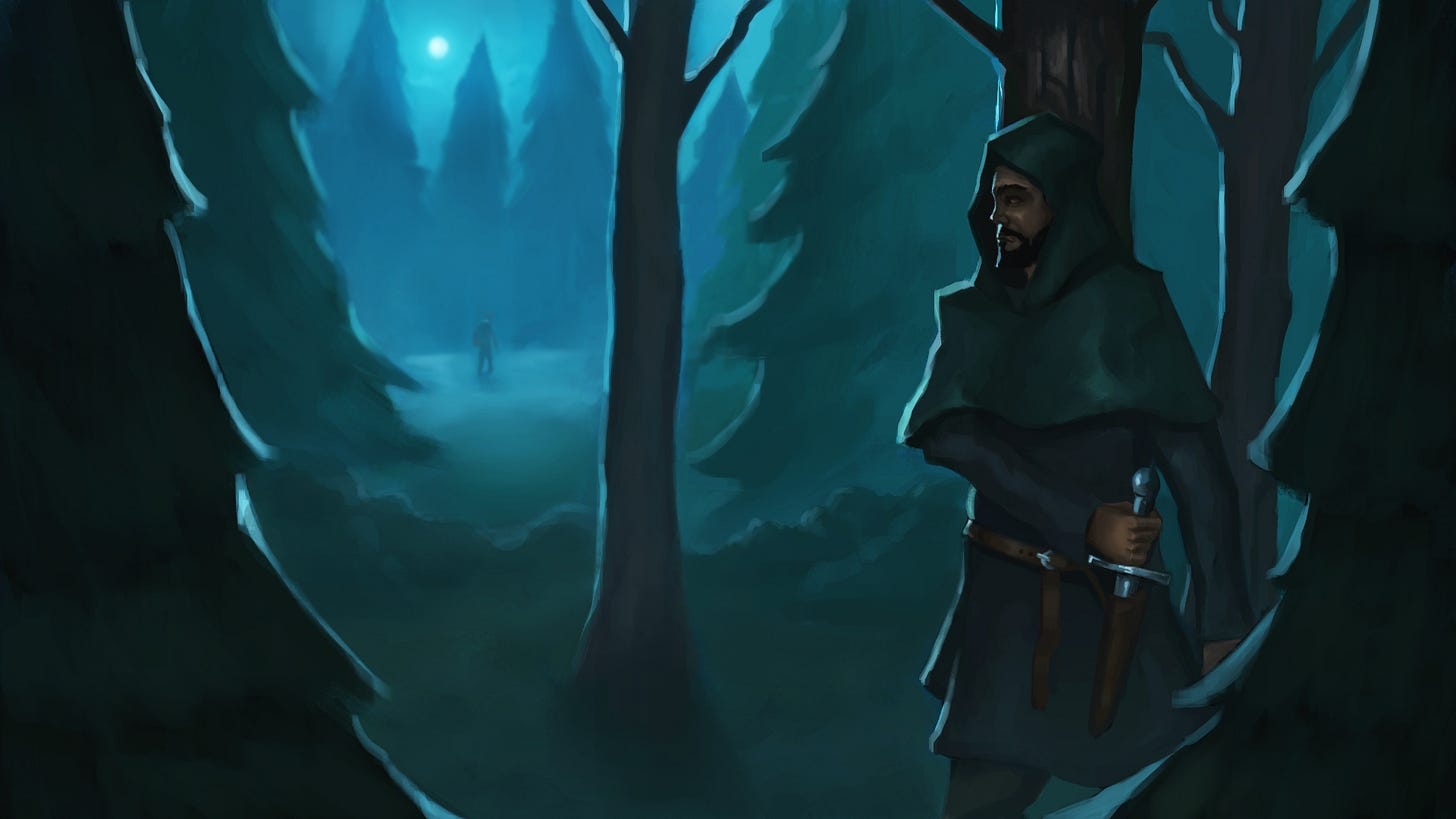
A nice break down! I'm intrigued with the phase of quickly making several mock-up sketches. It's something I've never tried with visual art... but I will now!